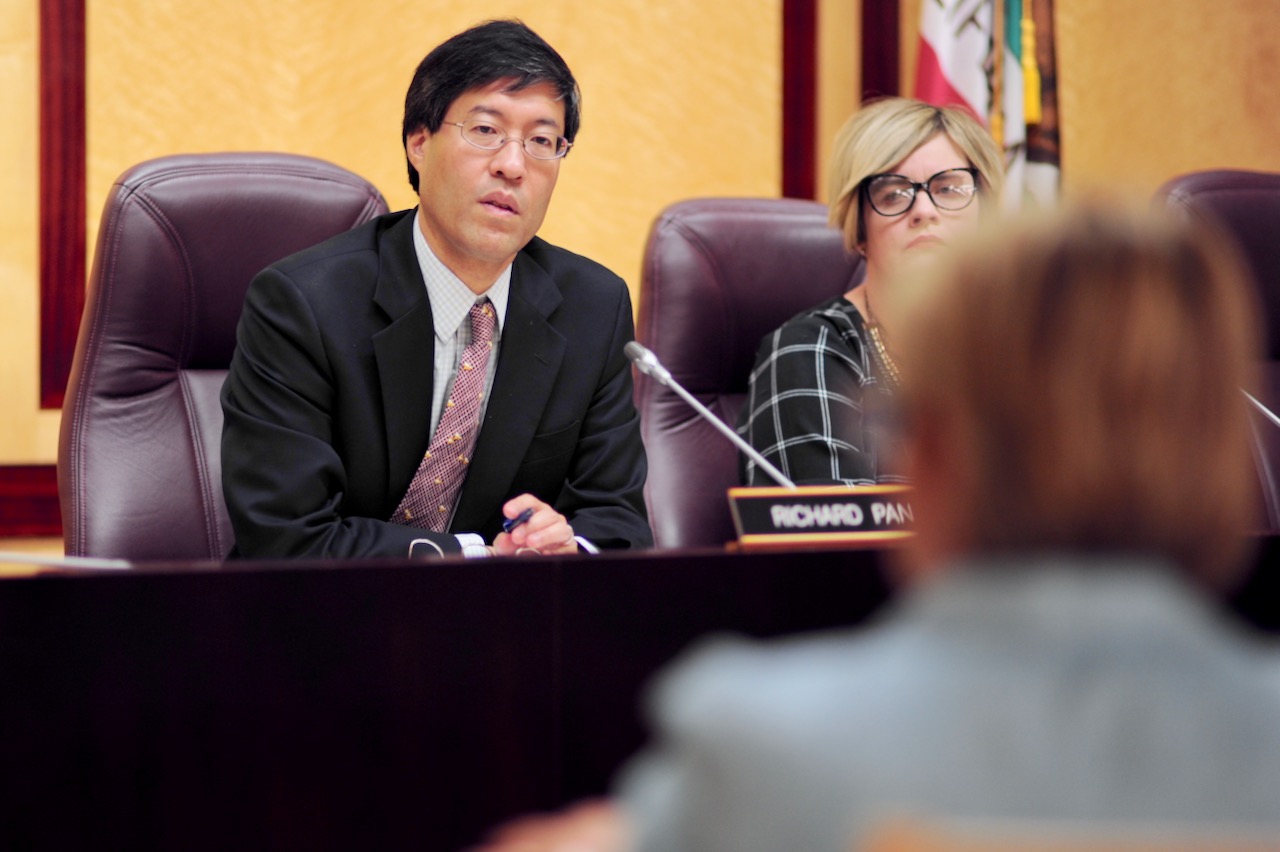
California Air Resources Board. (Photo: CARB)
It’s In the Air We Breathe: CARB and Racial Equity
CARB has also instituted a six-step ‘racial equity lensing’ construct through which all projects and proposals and new rules should be viewed while being created
By Thomas Buckley, July 1, 2024 6:47 am
Rabbit hole. Wormhole. Rat hole.
When trying to digest various government racial equity plans, these are three frustrating words that come up rather too often.
Click on one government thing and it takes you to another and to another and eventually you end up in a place where someone is making money off the issue.
The effect can be numbing, especially considering that the words and claims and exhortations and strategies all blend together and few government agency “Racial Equity Actions Plans” are at all unique. The phrases are all the same, the explanation why equity is a process that can never end are all the same, and the results…well, it’s pretty hard to tell if there are any.
Measuring “anti-racism” is not like – for example in the case of the California Air Resources Board (CARB) – the same as determining the amount of particulate pollution there is in the air.
This nebulosity is both at the core of the racial equity movement and one of its most potent attributes – if it can’t really be measured, it can’t really ever be “fixed,” can it?
And the work and the money and the jobs continue forever, even if the actual activities of an agency’s anti-racism blue ribbon stakeholder crisis task force created to fix the problem eventually and seemingly invariably just devolves into an excuse to hire consultants and have lunch on the public dime.
On occasion, though, actual work product is produced – and it is often rather un-democratic and very government agency staff empowering. The Government Alliance on Racial Equity (GARE) is one of the largest and most notorious organizations that is focused exclusively, as the name suggests, on government (nor private) equity efforts.
GARE has a massive “communications guide” to teach agencies how to message the messaging surrounding racial equity programs. It even says to massage the messengers, including elected leaders and the press:
“Before you have important press releases to share, develop relationships with specific journalists whose columns or publications appear values-aligned.”
“Appear values-aligned” is code for only picking progressive propaganda pronouncing publications. (Note – for everyone, but especially those even vaguely in the communication/media/etc. business, I would highly recommend reading the entire communications plan. It is both horrifying and exactly why the public doesn’t – and shouldn’t – trust the government anymore.)
A few years ago, CARB launched a ‘Racial Equity Framework,” in part citing GARE for some of the work that went its creation. It used the right buzzwords, set lofty goals, and, as is standard in government programs, blamed the government for fostering racial in-equity, either overtly (in the past) or covertly (the present.)
The framework is meant to “center” race in practically every action CARB takes, but looks beyond race at the “intersectionality” of conditions.
“This approach leads with race but is not exclusive to race. Addressing racial inequities prepares us to recognize and deal with inequities based on other forms of marginalization. This also requires an understanding of intersectionality. Religious discrimination, sexism and misogyny, discrimination against gender non-conforming and non-binary gender people, ableism, anti-multilingualism and other discrimination based on important areas of human identity must also be addressed,” the framework demands.
Because the concept is so squishy and/or not exactly real and merely an academic political construct intentionally created to be wielded as a societal hammer, the framework includes a couple of definitions:
“Intersectionality is a term used to describe how people experience the interconnected nature of different facets of their identities—such as their race, gender, sexual orientation, and class—and how those identities are valued within existing systems of power. Intersectionality can also refer to the interconnected nature of all forms of discrimination or disadvantage against historically oppressed or marginalized groups. “
Or, if you prefer:
“Intersectionality is a lens through which you can see where power comes and collides, where it interlocks and intersects. It’s not simply that there’s a race problem here, a gender problem here, and a class or LBGTQ problem there. Many times that framework erases what happens to people who are subject to all of these things.”
When “something” becomes “everything, then everything becomes nothing.
The framework expounds on government’s former “explicit” bias and asserts that any current race-neutral concepts or plans or projects are implicitly and by definition biased specifically because they don’t emphasize race.
It should be noted that the framework also has an interesting view of that government history of racism:
“Because people came together in mass protest and in tactical coalitions to change the laws in our country, the 13th, 14th and 15th amendments to the U.S. Constitution ended slavery, freed enslaved people, recognized the right to equal protection under the laws of the U.S., and gave Black men and other men of color the right to vote, respectively.”
See what’s missing? Any mention of The Civil War.
Apparently, slavery was not ended by hundreds of thousands of people giving their lives to reunify the country and strike the abomination from America – it was just a mass protest, like the Goerge Floyd riots.
The framework is, however, crystal clear on the difference between “equity” – good – and “equality” – bad:
“Equity is NOT the same as equality. Equity is about fairness, while equality is about sameness. Equity involves providing people with the appropriate resources and support, for their particular situation, to enable them to experience similar opportunities and outcomes as other groups. Equality, on the other hand, involves giving everyone the exact same level of support or resources regardless of their situation.”
The work towards equity is divided into three segments – Awake, Woke, and Work. Awake seems to be acknowledging the problem, woke is figuring out what to do about it, and work is the work to actually do something. And what has been done?
Well, that seems a little sketchy. The framework was adopted in 2020 (of course) and on the website can be found a single update from 2022.
The update notes that the Diversity and Racial Equity Task Force (DaRE) has cobbled together workshops, is making sure to celebrate “heritage months,” is “normalizing the conversation around racial equity,” and offering implicit bias training from a Morehouse College professor who is quoted as saying “If you are human, you have implicit bias.”
Guess he’ll never be out of consulting work.
It has also provided resources like “books, movies, videos, episodes, podcasts, web-based resources, prompts, training,” created “Engagement events, emails, chat rooms,” and done something called “reflections.”
It seems doubtful that involves looking in a mirror.
CARB has also instituted a six-step “racial equity lensing” construct through which all projects and proposals and new rules should be viewed while being created, especially when potentially impacting poorer neighborhoods that are close to things like freeways and train tracks and such. Considering the national backlash to the latest CARB proposal to force railroads to buy locomotives that don’t exist yet, that may not be working out terribly well.
By the way, these target areas are dubbed “emission burdened communities.”
And the only thing I could think of when I read that term is this:
Rather rude, but for some reason, in this context as the progressives say, oddly appropriate.
- USC Professor Cleared… And, Yes, Hamas Are Murderers - July 2, 2024
- Homeless Account for 12% of Fire Calls in Los Angeles - July 2, 2024
- It’s In the Air We Breathe: CARB and Racial Equity - July 1, 2024





People who see everything through the prism of race are … Racists.
Tell me how I’m wrong.
“When ‘something’ becomes ‘everything,’ then everything becomes nothing.”
That’s IT! – in a nutshell, regarding this buzzword-laden emptiness that contemptuous politicians and bureaucrats have been confident are somehow pulling a fast one on the People. But what do they do when the People increasingly tune in to this nonsense, then become more and more aware of the schemes, and finally get P.O.’d to the max?
I hope these rats have saved their money and have kept their passports updated because it’s becoming pretty clear now that their era of working in the dark is coming to an end. One way or another.